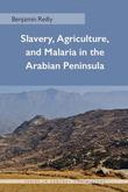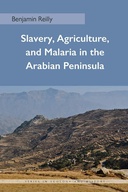Explore

Slavery, Agriculture, and Malaria in the Arabian Peninsula
Benjamin Reilly
2015
0 Ungluers have
Faved this Work
Login to Fave
This book illuminates a previously unstudied phenomenon: the large-scale employment of people of African ancestry as slaves in agricultural oases within the Arabian Peninsula. The key to understanding this unusual system is the prevalence of malaria within Arabian Peninsula oases and drainage basins, which rendered agricultural lands in Arabia extremely unhealthy for people without genetic or acquired resistance to malarial fevers. In this way, Arabian slave agriculture had unexpected similarities to slavery as practiced in the Caribbean and Brazil. This book synthesizes a body of historical and ethnographic data about slave-based agriculture in the Arabian Peninsula. Reilly uses an innovative methodology to analyze the limited historical record and a multidisciplinary approach to complicate our understandings of the nature of work in an area that is popularly thought of solely as desert.
This book is made open access as part of the Knowledge Unlatched KU Select 2018: HSS Backlist Books
This book is made open access as part of the Knowledge Unlatched KU Select 2018: HSS Backlist Books
This book is included in DOAB.
Why read this book? Have your say.
You must be logged in to comment.
Rights Information
Are you the author or publisher of this work? If so, you can claim it as yours by registering as an Unglue.it rights holder.Downloads
This work has been downloaded 223 times via unglue.it ebook links.
- 91 - pdf (CC BY-NC-ND) at OAPEN Library.
- 78 - pdf (CC BY-NC-ND) at Unglue.it.
Keywords
- Arabian peninsula
- Environmental Studies
- History
- History / Historical Geography
- history of the Arabian peninsula
- KUnlatched
- lavery and the slave trade
Editions



